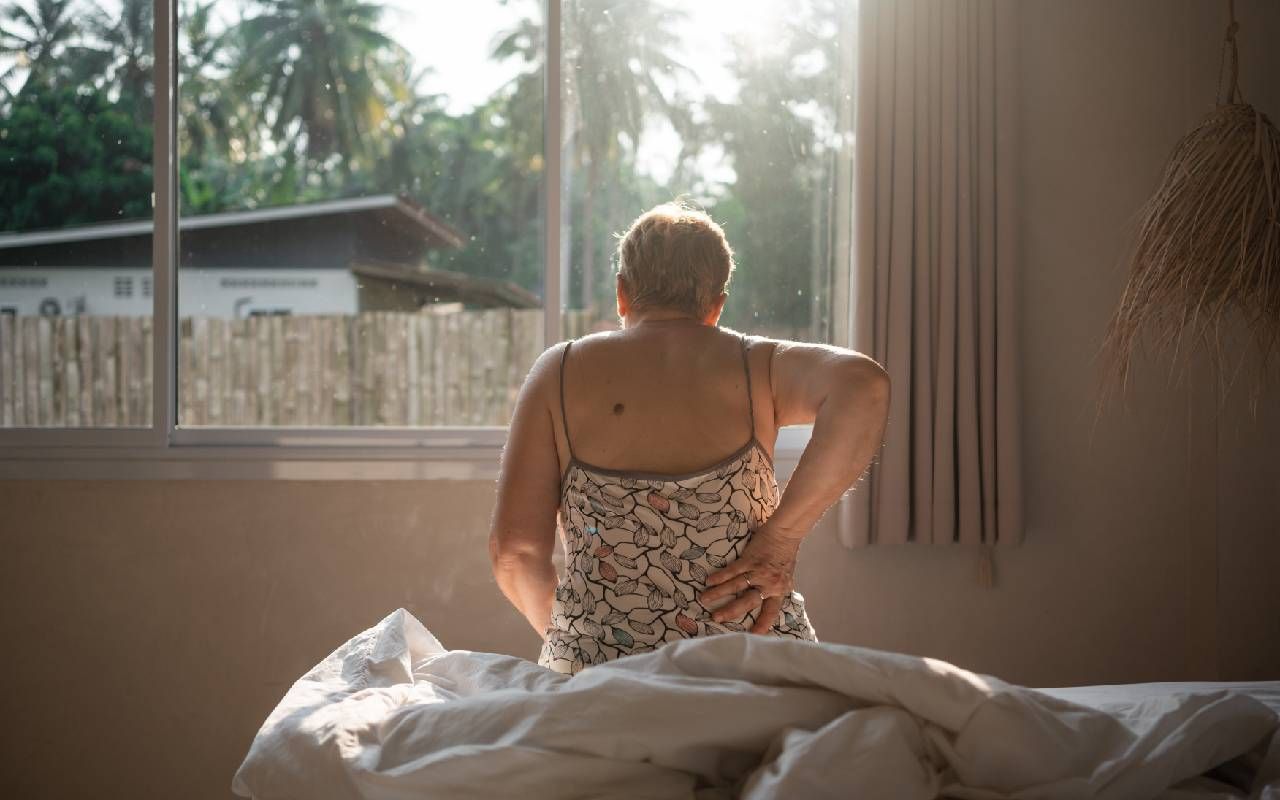Coccydynia: A Pain in the Tail
Tailbone pain can be chronic or acute, can resolve on its own or necessitate interventions ranging from moderate lifestyle changes to, in rare cases, surgery
Many people never give a thought to their coccyx, or tailbone, the triangular bone that sits at the bottom of the spine – that is, until it starts causing discomfort. Coccydynia, or tailbone pain, can afflict anyone. It can be chronic or acute, and it can resolve on its own or necessitate interventions ranging from moderate lifestyle changes to, in rare cases, surgery.

While there's no single reason for tailbone pain, it often occurs after someone experiences a physical trauma, such as a fall, according to Leia Rispoli, MD, an interventional pain management specialist and physiatrist for DISC Sports & Spine Center in Los Angeles. But even prolonged sitting on hard surfaces, such as stadium bleachers, or taking hours-long car rides can trigger coccydynia.
"Sometimes it's unrelated to a direct impact, and can be related to spine or pelvic issues as well."
"Sometimes it's unrelated to a direct impact, and can be related to spine or pelvic issues as well," says Rispoli. "We also see it in patients that have recently lost significant weight or muscle mass in the gluteal area."
Paradoxically, obesity also can lead to coccydynia, as excess weight increases pressure on the tailbone, says Shoshana Ungerleider, an internal medicine physician in San Francisco and host of the TED Health podcast.
Other causes of tailbone pain? Sports such as cycling or rowing, as you're normally seated for those. Simply being female means you're more likely to suffer from the condition, probably due to womens' different pelvic structure and the impact of childbirth on the area. Less commonly, coccydynia can result from bone infections such as osteomyelitis or cancerous conditions such as chordoma.
Not to Be Ignored
So, should you be worried if you suddenly have pain in the spot right above your buttocks, where your spine ends? It's probably too soon to panic, according to Ungerleider. Coccydynia itself doesn't generally present any danger, but that doesn't mean it's easily ignored.
"It does not typically lead to other conditions, but the pain can cause individuals to alter their posture or gait to avoid discomfort, potentially resulting in secondary musculoskeletal issues," she said.
Rispoli agreed, adding that since tailbone pain is most often felt when sitting, people may try to avoid activities that involve sitting down, which can be tough to do – imagine trying to drive, attend performances, or go out to eat without being seated.
Getting Rid of Tailbone Pain
Even if you fall and notice pain in your coccyx, you may not need to rush to your doctor. As with other bones that fracture, such as little toes and ribs, physicians often take a hands-off attitude toward the tailbone.
"It heals like a broken bone, which means it takes weeks to a couple of months."
"It is something that can be broken; it's not something that we do surgery on," observes DJ Kennedy, MD, president of the American Academy of Physical Medicine and Rehabilitation and professor and chair of the department of medicine and rehabilitation at Vanderbilt University in Nashville. "It heals like a broken bone, which means it takes weeks to a couple of months."
If you're bothered by tailbone pain that persists for more than a month or two, though, it's a good idea to get medical help.
"Management and treatment of coccydynia are usually overseen by a range of health care practitioners, including primary care physicians, orthopedists, physiatrists (rehabilitation medicine specialists), and, in some cases, pain management specialists or neurologists," Underleider said. "Physiotherapists may also play a crucial role in the patient's rehabilitation process."
Pelvic floor therapists can be a good resource for some patients, according to Kennedy, although people should know that treatment may involve transvaginal or transrectal manipulation.
Treatment Options
Because tailbone pain can be referred from another part of the body, such as the rectum, ovaries, prostate or a different part of the spine, some clinicians may want to perform a physical exam or order an MRI or x-ray to rule out other conditions, such as cancer. According to Kennedy, if the pain can't be replicated – in other words, if the tailbone doesn't hurt when directly pressed on – the pain almost certainly is not being generated by the tailbone but by another body part.
Assuming an exam and/or imaging reveals nothing concerning, you'll probably be advised to take Tylenol and avoid sitting for long periods of time.
Assuming an exam and/or imaging reveals nothing concerning, you'll probably be advised to take Tylenol and avoid sitting for long periods of time in order to avoid aggravating your coccydynia; in fact, you may want to invest in a small cushioned or padded seat that you can take with you during times when staying seated is unavoidable. Your provider may prescribe nonsteroidal anti-inflammatory drugs for pain management, although Kennedy advises against them as they can impair bone healing.
If more conservative treatments don't do the trick and your tailbone pain becomes chronic, you may find relief with steroid injections that target the tailbone joint as well as the nerves around it. While this therapy won't alter the underlying issue causing the pain, Kennedy says, it can control inflammation and break the cycle of pain that's causing you so much distress.
Surgery may be considered as a last resort for patients who can't find relief any other way.

